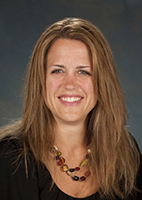Principal Investigator: Joshua Hawley, John Glenn School of Public Affairs
Co-Investigators: Dawn Anderson-Butcher; Kathryn Maguire Jack; Natasha Slesnick
Project Dates: 01/01/2016 – 06/30/2017
Anticipated Total Award Amount: $845,500
Project Sponsor: Ohio Department of Job & Family Services; Administration for Children and Families, U.S. Department of Health and Human Services
Ohio child protective services citizen review panel program coordinator
Our proposed scope of work includes the following elements:
- Consult regularly with staff at ODJFS, to identify strengths and weaknesses of the current process, determine which CRPs are functioning well and why, and examine which CRPs are not meeting aspirations and why.
- Develop a mission statement for the CRPs, reflecting ODJFS objectives that will serve as an actionable guide for each CRP to discharge its responsibilities. When necessary, modify these mission statements to reflect a difference in objectives among the CRPs, based on the prior discussion of the architecture of the CRP process between ODJFS staff and contract leadership.
- Establish a process for recruiting and enrolling members in new CRPs. The process will take into account the agency’s goals and build on the existing enrollment process, with specific attention on increasing diversity of the CRPs
- Establish a framework for supporting both the existing CRPs and the new CRPs formed under this contract, phasing out CRPs on the basis of discussions with ODJFS. For existing CRPs, facilitate a process for transitioning the support of those panels from the incumbent contractor to this contract.
- Develop a process and program for on-boarding new CRPs and new CRP members, starting them off with the necessary training about statutory and procedural constraints on the child welfare process as well a synopsis of research findings, trends, institutions, practices and issues surrounding the efforts of Child Protective Services.
- Develop a mechanism for publicizing the efforts of the CRPs and publicizing the efforts of the Child Protective Services and the essential role of CRPs. The intent of these efforts is to improve public knowledge regarding child welfare in Ohio and as an essential part of recruiting new CRP members by raising the awareness of these panels and the need for citizen involvement in them.
- Build a structure that gathers and integrates essential data on children at risk, drawing not only on data resources in SACWIS, but also the data resources from other parts of ODJFS and other agencies such as the Ohio Department of Education. This will likely require memoranda of understanding and legal agreements governing the use and security of data on the part of the contract. Fortunately, CHRR has executed many such agreements over the past several years in the process of building the Ohio Longitudinal Data Archive. As in other cases, there are clear advantages to both ODJFS and ODE in 16 using integrated data systems to enhance the performance of both the education process and the functioning of CPS. It is this principle of mutual advantage that lies at the heart of the growing interest among state agencies to support the building and maintenance of an integrated data archive.
- Incorporate, document and archive SACWIS and other relevant data into the existing data archive for the purpose of generating data-driven decision making.
- Serve as an informational hub to the CRPs by attending all meetings, generating meeting summaries, consulting with ODJFS on the direction of those meetings, and then holding an annual meeting in Columbus at which CRP members, contractor senior leadership and ODJFS meet to review the year, discuss progress toward objectives, track compliance with the requirements of CAPTA, plan for the coming year, and discuss how the process of CRP review needs to be modified to optimally support the objectives of Child Protective Services.
- Engage in long-term planning and project execution to enable the child welfare data structure to support long-term evaluation of the child welfare process. Currently, the standards of safety, permanency and well-being cover a limited horizon over which child outcomes are tracked. Not only are outcomes after 18 relevant considerations in assessing the CPS processes, the relevant horizon extends out for decades so that we can determine how well these most disadvantaged children are able to integrate with the larger social fabric. The existing data structure CHRR has constructed includes data going back decades and tracking outcomes holistically as long as they remain in Ohio. This existing capability, applied to the programs of Child Protective Services can transform how we look at service provision by tracking outcomes decades after children leave the system.
- Maintain a robust suite of quarterly and annual reports to ODJFS and meet monthly with ODJFS staff, preferably in person but possibly by telephone, to review activities, unexpected events, problems, shift in priorities and emphases and other factors. While we cannot anticipate what changes will occur over the life of the contract, we can expect that some changes will occur and we can prepare a flexible management structure with the ability to react and adapt.
Principal Investigator: Margaretha Izzo, College of Medicine
Co-Investigator: Dennis Cleary, College of Medicine; Helen Malone, Department of Educational Studies; Andrew Persch, College of Medicine; Amy Shuman, Arts and Sciences
Project Dates:
Anticipated Total Award Amount: $2,456,225
Project Sponsor: US Department of Education
Ohio’s statewide consortia: Enhancing employment outcomes for postsecondary students with intellectual disabilities
Principal Investigator: Laura Justice
Project Dates: 04/26/2015 – 04/25/2016
Anticipated Total Award Amount: $13,600
Project Sponsor: Ohio Child Care Resource & Referral Association
Quality achievement award – SUTQ 2015-2016
Principal Investigator: Deanna Wilkinson, Human Sciences
Co-Investigators: Laquore Meadows, Ana Zubieta
Project Dates: 9/1/2015 – 8/31/2020
Anticipated Total Award Amount: $660,000
Project Sponsor: National Institute of Food & Agriculture
Urban G.E.M.S. (Grow fresh, eat fresh, market fresh, and sustain healthy communities)
Urban G.E.M.S. (Gardening Entrepreneurs Motivating Sustainability) is a multi-faceted 21st Century positive youth development initiative designed to cross multiple skills domains through the introduction of nutrition, health wellness; entrepreneurial business principles; and community efficacy. GEMS program activities will enrich the science, health, personal and career development curricula at two community schools that serve youth and families placed at high risk. Through CYFAR support Urban GEMS participants will develop a deeper understanding of nutrition through fresh produce and local food production. Program participants will benefit in measurable ways by engaging deeply in a solutions-based, sustainable community project drawn from the blended expertise of University faculty, extension educators, community school professionals, devoted community volunteers, and business sector partners. Our two community sites in Franklin and Mahoning Counties in Ohio are socioeconomically disadvantaged areas with extremely high rates of poverty, chronic joblessness, high crime rates, mass incarceration, failing public schools, food insecurity, and disproportionate negative health outcomes. The measurable goals and objectives of GEMS are to improve health related knowledge, attitudes, and behaviors among the youth participating in our program. We aim to increase the youth’s fresh fruit and vegetable consumption by 50% during the program. As the youth are engaged in new activities and experiences they will be asked to share their knowledge with their parents/guardians/other community adults to spread awareness of the benefits healthy habits. As a school community, we will document our activities in photos, student journals, oral presentations, and a video production of what the students experienced in the program. We aim to create a sustainable model that propels engaged youth as leaders in developing and applying 21st century skills to address local community needs as they work side-by-side with caring adults inspired by their passion for young people.



